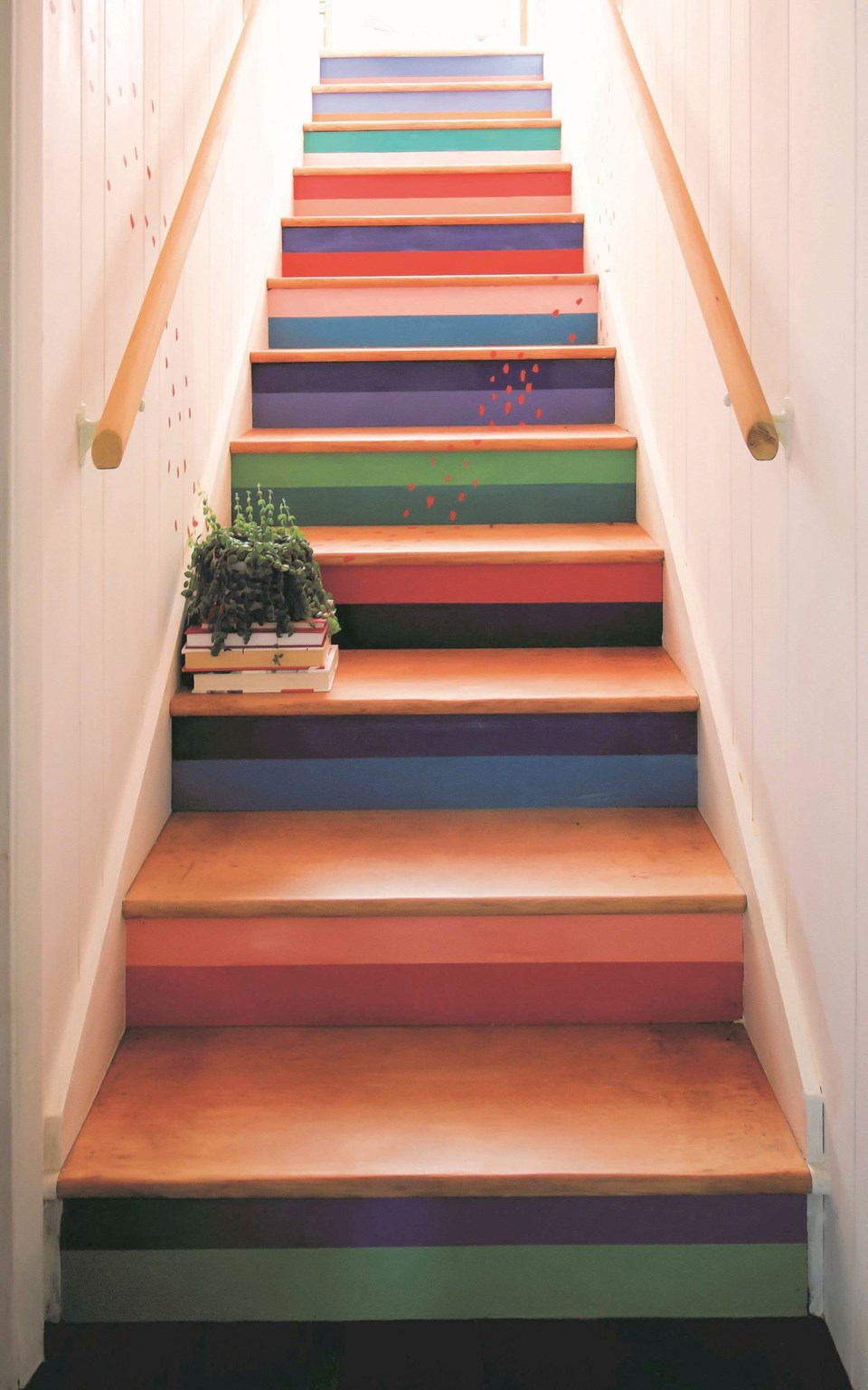Dear Debbie: We have just ripped up a ratty old runner that covered our stairs and would like to do something interesting, not carpet. We are a young family and all love colour. What would you do?
Cindy
I came across a youthful and exciting stairway treatment in Annie Sloan鈥檚 third edition of The Colourist. It was a project submitted by Rachel Jackson (banyanbridges.com), and your family will have fun designing your own take on this design.
Jackson says she loves using bold stripes and funky colour in her home as an act of rebellion against the grey and the neutral. She was updating a small dark staircase and thought she would take full advantage of the non-priming feature of Annie Sloan鈥檚 Chalk Paint.
Jackson wanted to leave the railings and stair treads natural, so she simply sanded them to reveal the light colour. She chose seven Chalk Paint colours, mixing a few of them to produce the shades that she wanted.
Napoleonic Blue tied the whole theme together. Masking tape was used to divide the risers, creating a neat line between the two Chalk Paint colours she painted on each one.
To brighten the wood panelled walls, a coat of Chalk Paint in Pure made a big difference. Jackson finished by sealing everything using Matt Chalk Paint Lacquer.
Since you removed a runner, your stair treads might be marked with nail holes and gouges. If the wood is good quality, fill any holes with wood filler and sand smooth. Otherwise paint the treads as well as the risers. A tip for painting stairs: work on every other stair so that you can still use the stairs (carefully) while you are working on them.
Dear Debbie: The vaulted ceiling in our great room is varnished knotty pine tongue and groove and has oranged over time. The room feels imposing on a dark day. As you suggested in another reader letter, we could paint it white. But I鈥檓 also wondering about putting in a skylight. It is a tough area to heat.
Anne
There are pros and cons for putting in skylights.
They get high marks for letting in more natural light during the day, which can be a real bonus, especially during the shorter, dark days of winter.
However, skylights do decrease energy efficiency in winter.
Warm air from your room rises and some escapes through the skylight, while some is cooled by the glass and falls back down into your room.
A large room can be difficult to heat and one or two skylights can add to the challenge.
If you decide to go for the benefits of more light, then, if possible, choose a south-facing skylight, as it will receive the most sunlight during the day.
Check with a building supplier in your area and investigate the different types of skylight glazes, including heat-absorbing tints that improve energy efficiency.
Paint might be your best solution.
And you can always put in spotlights on the ceiling and sconces on the walls to improve the lighting, using dimmers to control the intensity.
Written by Debbie Travis and Barbara Dingle. Please email decorating questions to [email protected]. Follow Debbie on 听辞谤 or at聽.



